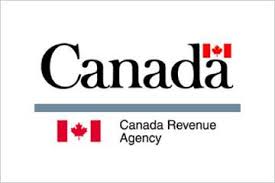Vancouver, British Columbia, April 24, 2019… Getting ready to do your 2018 taxes <https://www.canada.ca/en/revenue-agency/campaigns/taxes-get-ready.html>? The Canada Revenue Agency (CRA) has a few tips that could save you time and money. At tax time, here are eight things to remember:
- File your tax return
Most Canadian income tax and benefit returns for the 2018 tax year are due on April 30, 2019. It’s important to file your tax return on time to avoid interest and penalty charges, and possible delays or interruptions in your benefit and credit payments. Even if you didn’t receive any income this year, you may still get a tax refund and be eligible for benefit and credit payments. For example, families who are eligible for the Canada child benefit <https://www.canada.ca/en/revenue-agency/services/child-family-benefits/canada-child-benefit-overview.html>
(CCB) can receive up to $6,639 annually for each child under the age of 6 and up to $5,602 annually for each child aged 6 to 17. If you have a spouse or common-law partner, they also have to file their tax returns every year. The CRA uses the information from your income tax and benefit return to calculate your benefit and credit payments, and any related provincial or territorial payments for which you may be eligible.
If you want to do your taxes yourself, the CRA has a step-by-step guide that makes doing your taxes <https://www.canada.ca/en/services/taxes/income-tax/personal-income-tax/doing-your-taxes.html> easy.
- Make sure you claim tax credits and deductions
There are tax credits and deductions you may be able to claim on your return, like the working income tax benefit. Not sure what tax credits and deductions you may be eligible for? Go to canada.ca/taxes-get-ready <https://www.canada.ca/en/revenue-agency/campaigns/taxes-get-ready.html>to learn about the new and existing tax measures that could help you save money.
If you operate your own registered business, you may be entitled to claim a number of business expenses on your return, like motor vehicle or business use of home expenses. For more information on the expenses you may be eligible for, visit Business expenses<https://www.canada.ca/en/revenue-agency/services/tax/businesses/topics/sole-proprietorships-partnerships/business-expenses.html>.
- Report all your income
Make sure you report all your income. You should have most of your slips <https://www.canada.ca/en/revenue-agency/services/tax/individuals/topics/about-your-tax-return/tax-return/completing-a-tax-return/tax-slips.html>,
such as T4 slips, from your employer, the payer of your income, or administrator by the end of February. If you have not received, or you lost or misplaced a slip for 2018, ask the issuer of the slip for a copy. If you register with My Account<https://www.canada.ca/en/revenue-agency/services/e-services/e-services-individuals/account-individuals.html>, you may have access to online copies of your slips. If you are still missing information, use your pay stubs or statements to estimate your income to report. Keep all of your documents in case the CRA asks to see them later.
Some income you earn may not be included as part of a tax slip. Tips, money earned providing accommodations or ride sharing, regularly selling stuff at a flea market or online, providing tutoring services, handy-man or snow removal services – all of this is considered income that must be reported.
Did you sell your principal residence<https://www.canada.ca/en/revenue-agency/services/tax/individuals/topics/about-your-tax-return/tax-return/completing-a-tax-return/personal-income/line-127-capital-gains/principal-residence-other-real-estate.html> in 2018? If so, you have to report basic information on your return to claim the principal residence exemption.
If you already filed your tax return but did not report all of your income or deductions, use the ReFILE<https://www.canada.ca/en/revenue-agency/services/e-services/e-services-businesses/refile-online-t1-adjustments-efile-service-providers.html> service in your NETFILE software to change your return, visit an EFILE service provider to Refile, or use the “Change my Return” service in My Account<https://www.canada.ca/en/revenue-agency/services/e-services/e-services-individuals/account-individuals.html>.
You can also change your return with Form T1-ADJ, T1 Adjustment Request<https://www.canada.ca/en/revenue-agency/services/forms-publications/forms/t1-adj.html>, and mail it to your tax centre<https://www.canada.ca/en/revenue-agency/corporate/contact-information/tax-centres.html>.
For more information, please visit How to Change Your
- Make valid claims
Make sure you know what you can and cannot claim. Sometimes non-deductible amounts, such as funeral expenses, wedding expenses, loans to family members, a loss on the sale of a home used primarily as a residence, and other similar amounts, are claimed by mistake.
If the CRA finds that you made a mistake or made a claim in error, they will change your return. For a list of the most frequent changes the CRA makes, see common adjustments<https://www.canada.ca/en/revenue-agency/services/tax/individuals/topics/about-your-tax-return/review-your-tax-return-cra/common-adjustments.html>.
- Take advantage of free tax software
Did you know there are free certified software programs<https://www.canada.ca/en/revenue-agency/services/e-services/e-services-individuals/netfile-overview/certified-software-netfile-program.html>
that you can use to do your taxes online? Last year, about 90% of Canadians filed their returns online. Some of these software programs will give you suggestions on which tax credits and deductions you can claim and which benefits and credits you can apply for, based on the information you enter.
If you are fully registered for My Account<https://www.canada.ca/en/revenue-agency/services/e-services/e-services-individuals/account-individuals.html>, you can use Auto-fill my Return <https://www.canada.ca/en/revenue-agency/services/e-services/about-auto-fill-return.html> to automatically fill in parts of your current and prior-year income tax and benefit returns, making filing even simpler. You will also be able to use the Express NOA<https://www.canada.ca/en/revenue-agency/services/e-services/about-express-noa.html> service to get your notice of assessment right after you file your return.
- Get free tax help
If you have a modest income and a simple tax situation, a volunteer from the Community Volunteer Income Tax Program (CVITP) may be able to do your taxes for you,for free. Find a tax preparation clinic near you or learn more at canada.ca/taxes-help<https://www.canada.ca/en/revenue-agency/campaigns/free-tax-help.html>.
You can also find a tax preparation clinic using the MyCRA<https://www.canada.ca/en/revenue-agency/services/e-services/cra-mobile-apps.html> mobile web app.
- File and pay on time
If you have a balance owing and do not file your return on time, the CRA will charge you a late-filing penalty. The penalty is 5% of your balance owing on the due date of your return, plus 1% of your balance owing for each full month your return is late, to a maximum of 12 months. Even if you cannot pay your balance owing by the filing deadline, you can avoid the late-filing penalty by filing on time.
If you cannot pay the amount you owe by the due date, it’s best to contact the CRA before then. The CRA will work with you to resolve your tax debt. You may be eligible for a payment arrangement <https://www.canada.ca/en/revenue-agency/services/tax/individuals/topics/about-your-tax-return/making-payments-individuals/payment-arrangements.html> or taxpayerrelief <https://www.canada.ca/en/revenue-agency/services/about-canada-revenue-agency-cra/complaints-disputes/taxpayer-relief-provisions.html>.
If you receive benefit payments, like the Canada child benefit, and you did not file your tax return on time, your payments can be delayed or stopped.
If you have never filed a return or haven’t filed for a few years, the CRA can help. You may be eligible for relief of interest, penalties, and prosecution by applying to the Voluntary Disclosures
- Keep receipts and records
Keep your receipts and other supporting documents for at least six
years<https://www.canada.ca/en/revenue-agency/services/tax/individuals/topics/about-your-tax-return/long-should-you-keep-your-income-tax-records.html> from the end of the tax year to which the records relate.
Sometimes returns are reviewed to make sure that income, deductions and credits are correctly reported. If the CRA reviews your return, having your receipts and records on hand makes it easier for you to support your claims. For more information, see responding to the
 Desi Today Magazine
Desi Today Magazine




